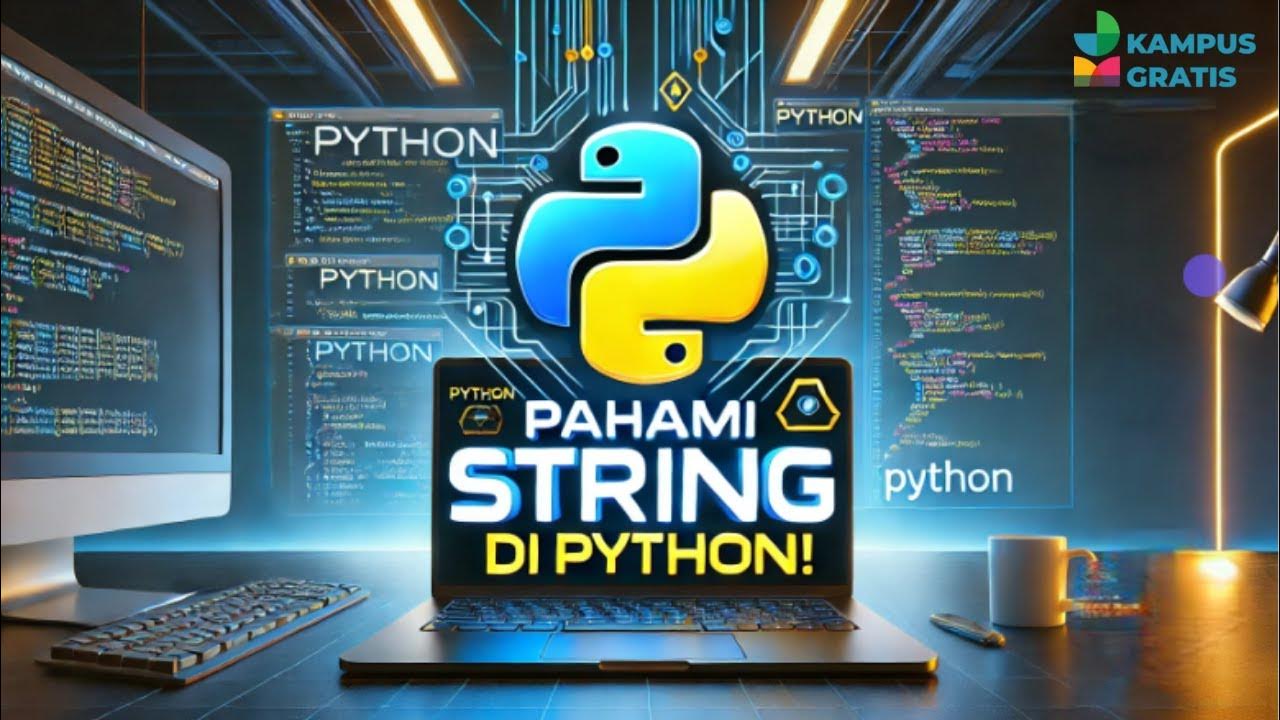Lec-16: Introduction to Strings🎶 in Python 🐍 with Examples | Python for Beginners
Summary
TLDRIn this educational video, the host welcomes students to an exploration of Python strings. They discuss the importance of strings in various data contexts, such as student databases and Indian Railways, emphasizing their ubiquity. The host defines strings as sequences of characters and highlights their immutability and order. They introduce basic concepts like indexing, starting from zero, and touch upon slicing, promising a detailed explanation in the next video. The video aims to equip students with the knowledge to handle any string-related questions in interviews or competitive exams.
Takeaways
- 😀 The video is aimed at students and covers the topic of strings in Python.
- 📚 The presenter plans to explain strings in Python with practical examples to ensure students can answer any related questions in interviews or competitive exams.
- 🔗 The importance of strings is highlighted by mentioning real-world examples like student databases and Indian Railways data, where both numeric and non-numeric data are stored as strings.
- 📝 A string is defined as a sequence of characters, and the presenter emphasizes the need to understand the concepts of mutability and order in strings.
- ⚠️ The video clarifies that strings are defined using single or double quotes in Python, and it's crucial to maintain consistency in the type of quotes used.
- 🔢 The concept of indexing in strings is introduced, explaining that indexing starts from 0, and each character in a string can be accessed using its index.
- 🔄 The presenter discusses the immutability of strings, meaning that strings cannot be changed once created, which leads to errors if one tries to modify them.
- 🔎 The video mentions the concept of slicing in strings, which will be explained in more detail in a future video, but it's introduced as a way to access parts of a string without modifying the original string.
- 📈 The presenter promises to cover more points on string execution in Python, indicating that the video is part of a series that will delve deeper into the subject.
Q & A
What is the main topic of the video?
-The main topic of the video is an explanation of strings in Python, including various aspects and examples to help students understand and use strings effectively.
Why are strings important in programming?
-Strings are important in programming because they are used to store and manipulate text data, which is essential for handling user inputs, database entries, and other textual information in various applications.
What is the basic definition of a string according to the video?
-A string is defined as a sequence of characters. It is mutable and ordered, which means you can change its contents and access elements by their position in the sequence.
How should strings be defined in Python?
-Strings in Python should be defined using either single quotes or double quotes. It's important to start and end with the same type of quote to avoid syntax errors.
What is the significance of the order in strings?
-The order in strings is significant because it allows for indexing, which means each character has a specific position or index starting from 0, enabling the programmer to access and manipulate individual characters within the string.
What does the term 'immutable' mean in the context of strings?
-In the context of strings, 'immutable' means that once a string is created, its contents cannot be changed. Any operation that seems to modify a string actually creates a new string.
How can you access a specific character in a string using indexing?
-You can access a specific character in a string using indexing by specifying the index of the character within square brackets, for example, `string[index]` where `index` is the position of the character starting from 0.
What is slicing in strings and how is it introduced in the video?
-Slicing in strings refers to the operation of extracting a portion of the string by specifying a range of indices. The video introduces slicing as a way to access substrings without modifying the original string.
Why is it important to understand the concept of indexing and slicing in strings?
-Understanding indexing and slicing is important because it allows for more complex manipulation of strings, such as extracting parts of a string or iterating over characters in a controlled manner.
What is the purpose of the 'len()' function when dealing with strings?
-The 'len()' function is used to determine the length of a string, which is the total number of characters it contains. This can be useful for various operations, such as looping through all characters or comparing string lengths.
How does the video encourage students to engage with the content?
-The video encourages students to engage with the content by inviting them to like the video, subscribe to the channel, and asking them to ask questions or challenge the concepts discussed to deepen their understanding.
Outlines

This section is available to paid users only. Please upgrade to access this part.
Upgrade NowMindmap

This section is available to paid users only. Please upgrade to access this part.
Upgrade NowKeywords

This section is available to paid users only. Please upgrade to access this part.
Upgrade NowHighlights

This section is available to paid users only. Please upgrade to access this part.
Upgrade NowTranscripts

This section is available to paid users only. Please upgrade to access this part.
Upgrade NowBrowse More Related Video
5.0 / 5 (0 votes)





